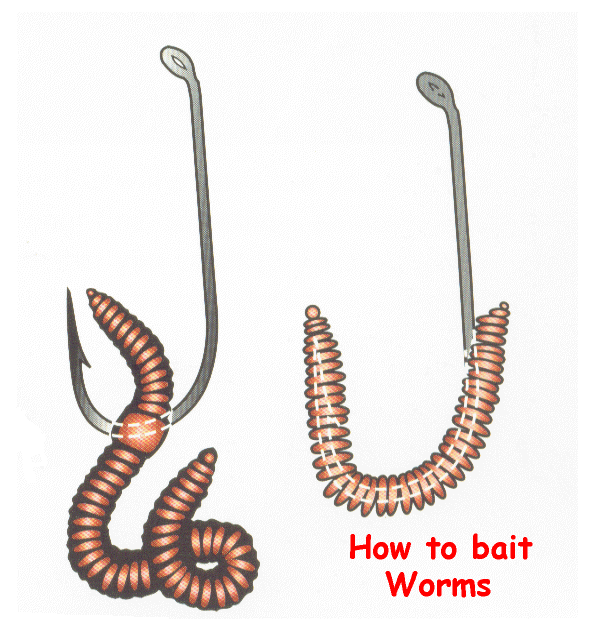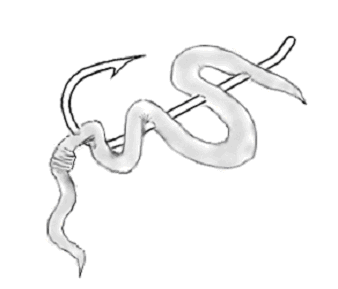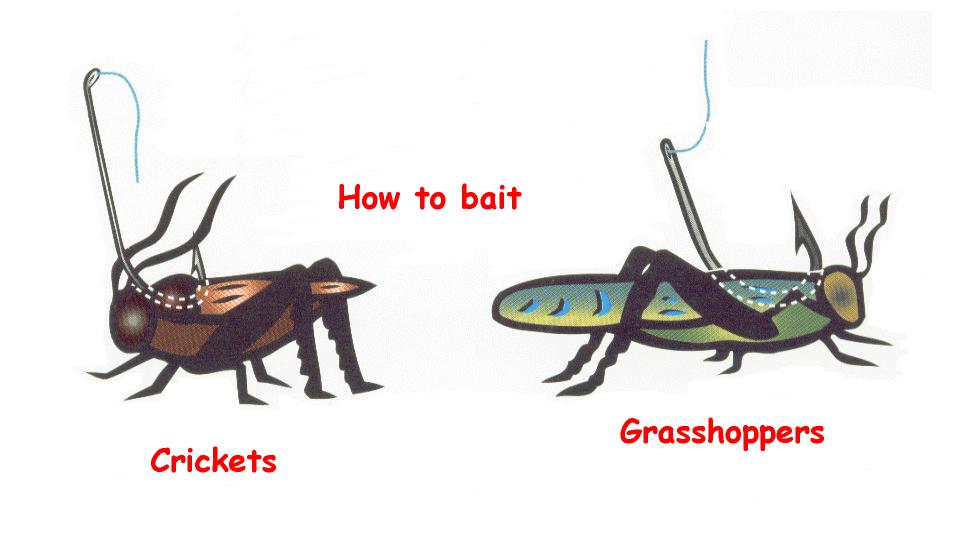We are now heading into the typical late autumn, early winter pattern of storms followed by spells of perfect calm fishing conditions. That's not to say the storms are bad though. During and after a decent blow is when the big Pink Snapper come inshore to feed, and after a heavy rain is when the Mulloway are hanging around the mouth of the river waiting for their food to wash down to them. Also the beaches are fantastic to fish as the storm's wave action dredges out some excellent channels and holes in which the big fish hunt. Target fish such as Tailor and Mulloway near the reefs at Triggs, Yanchep, and North Cottesloe and also near the Swanbourne Drain. | |
 I have just updated our monthly Catch Guide, now available in-store under our information board, and it's always interesting to see the amount and variety of fishing available over the winter months. The fish are generally bigger with Jumbo winter Tailor on the in-shore reefs, big Yellowfin Whiting inside the marinas, and how about Pike up to 90cm long on the Hillarys weed beds! The big winter Pink Snapper are caught from the ASI groyne, Rockingham Yacht Club Jetty, Palm Beach Jetty, the northern end of Cockburn Sound, in between Rottnest and Carnac Island, North Mole, both City Beach groynes, out on the 3-mile reefs, and at the end of the Hillarys south wall. | |
 In fact, any of the Marina groynes are worth a try after a storm. Please remember though that there will be lots of undersize "Squire" (baby Pink Snapper) around so please carefully release these. The current Pink Snapper size South of Lancelin is now 45cm. The various marinas and rock walls up and down our coast are also magnets for Herring, Garfish, Yellowtail, and various other "bread and butter" species at this time of year. If you fish from a small boat you will be likely to tangle with Samsonfish along the in-shore reefs as well as Bonito and Skippy, and there are good numbers of Squid anywhere there are weed banks. Cockburn sound is an excellent place to try for Squid as well as the weed beds around Hillarys Boat harbour. Rottnest is interesting in autumn and winter with various species available including good size Herring, Skippy, and Salmon in the bays around the island, particularly towards West End. Also off West End we continue to get reports of Spanish Mackerel and the Yellowfin Tuna will still be around. I would also be looking for Yellowtail Kingfish at Charlotte Bay and West End (please also check the locations of the various no-fish areas around the island). | |
 Salmon will still be caught in ones and twos from the northern rock-walls and beaches with better numbers coming from the North Mole and further south around Garden Island. Heading down to Mandurah will increase your chances further as there are nice size fish caught on the Dawesville Cut south wall and down towards White Hills. In the river the Bream are spread out all over the place so fishing around any "down-river" structure is possibly your best strategy. The Flounder are worth chasing around the East Fremantle area and the Prawns will be making their presence felt down that way as well. Don't let a little cold weather put you off or you may miss some great fishing action! Kind Regards from, Charlie, Colleen, Brody, Paul, Brent, Trent, Christopher, and Tamara, Your Got One Woodvale Team. | |
Fishing
Good ways to find out things about fishing
Wednesday 15 June 2011
Good fishing spots
How to put bait on
Once you put them on your hook they will eventually die, so you need to make them look like they are alive!
When attaching the worm to the hook, you'll want to hook the worm more than once so it stays on the hook.
The less you handle the bait with your fingers, the more effective your bait will be.
Human hands have an amino acid that is an aversion scent to fish,
so the less of this you deposit on the bait through handling, the more effective your bait becomes.
There are small, syringe-like applicators that allow anglers to bait hooks without touching the bait at all
or
you can use disposable sterile gloves (they're cheap).
Human hands have an amino acid that is an aversion scent to fish,
so the less of this you deposit on the bait through handling, the more effective your bait becomes.
There are small, syringe-like applicators that allow anglers to bait hooks without touching the bait at all
or
you can use disposable sterile gloves (they're cheap).

See the diagrams below to learn how to hook different types of live bait:




| 1. Pick your quarry. The type of fish is an important factor in choosing a hook. 2. Choose bait. Use hooks with barbs on the hook shank with live bait; use an offset worm hook with artificial bait. The size of the hook should equal the size of the bait. 3. Decide on multiple-use or single-use hooks. Mechanically sharpened hooks are easy to resharpen, which will save money. Chemically sharpened single-use hooks are higher grade and sharper, but also more expensive. 4. Decide on the hook gap. Bigger bait requires a bigger gap in the hook. 5.Use treble hooks for dough bait. 6. Determine cover. Use a weedless hook in weedy or mossy areas. 7. Choose between a "snelled" hook and a loose hook. Snelled hooks are pre-rigged for tying directly to the angler's line; loose hooks hold dough or softer bait. |
There are other methods of catching fish
WITHOUT
WITHOUT
Bays and Estuaries
Bays and Estuaries
Bays and estuaries are common throughout Australia and offer great fishing for a wide variety of species that can often be found in large numbers.
When fishing bays and estuaries look for drop-offs, channels and weed beds as these areas will hold concentrations of fish. Whether you are drifting or anchored in a boat or fishing from the shore, these areas are great places to find a wide variety of fish species.
To improve your results and concentrate fish to your area, a fine continuous trail of berley such as chicken pellets, bread or small fish pieces will help to improve your results. Another tip to remember is to fish on a tide change as the fish feed more actively.
| Species | Rigs | Baits |
| Bream/Trevally | General running rig Beach rig Bottom rig | Prawns Worms Nippers Fish pieces Chicken gut |
| Tips Bream respond extremely well to berley although they are very shy so it pays to use light line and as little lead on your rig as you possibly can | ||
| Species | Rigs | Baits |
| Whiting | General running rig Beach rig | Worms Nippers Prawns Pippies |
| Tips Whiting can be found on the edge of sand drop-offs where they feed. Anglers find that the addition of a red bead or piece of tubing above the hook will help to attract whiting to your bait. | ||
| Species | Rigs | Baits |
| Flathead | General running rig Paternoster rig Gang hook rig | Prawns Squid Live Mullet Pilchards Fish pieces |
| Tips Flathead can be found regularly throughout bays and estuaries as they lie in wait along drop-offs, weed beds and gutters. Anglers can improve their results on flathead by keeping the bait slowly moving across the bottom | ||
| Species | Rigs | Baits |
| Mullet/Garfish | Beach rig Quill or pencil flat rig | Prawn pieces Bread Worms |
| Tips Mullet and garfish are commonly found throughout bays and estuaries, they are most commonly found around weed beds. Berley such as breadcrumbs soaked in tuna oil will improve results, as it will bring fish from a wide area. | ||
| Species | Rigs | Baits |
| Mulloway | General running rig Floater rig | Live mullet Fresh Squid Live yellowtail |
| Tips Mulloway are a large shy fish mainly caught at night where they feed around reefs and gutters. To catch one of these creatures you will need to have the freshest bait possible and be very patient. When one does grab your bait allow it time to move off with it as mulloway will often mouth the bait before swallowing it. | ||
| Species | Rigs | Baits |
| Tailor | Ganged hook rig Bobby cork gang rig | Pilchards Whitebait Garfish |
| Tips Tailor fish are veracious feeders that travel in schools and can often be seen feeding as they splash through the surface of the water especially around dawn and dusk. Another way of finding tailor is to troll or spin along deep drop-offs with small metal lures. | ||
| Species | Rigs | Baits |
| Snapper | Floater rig General running rig Bottom rig | Pilchards Squid Prawns Fish fillets |
| Tips Snapper are shy feeders often caught around the dawn and dusk periods. Best methods include lightly berleying and fishing with lightly weighted baits. As with mulloway allow snapper time to eat the bait. | ||
Beach fishing
Beach Fishing
Australia has great beaches offering anglers a huge range of species to catch. Beach fishing can be a daunting affair when deciding where to fish, as a lot of areas donÕt hold or attract fish. What you need to look for is commonly known as a gutter. These run along various parts of the beach and are best distinguished by darker deep looking water, where the waves break on the ocean side of the gutter and usually don't break again until they are across the gutter and closer to shore.
Gutters vary in size, shape and the distance that they are offshore, the best possible way of finding one is from a high vantage point such as a sand dune, from here the gutters will stand out clearly. These gutters are where the fish will move into to feed and seek shelter. The best times to fish these areas is around dawn and dusk and or a run in tide, once again berley will improve your results.
| Species | Rigs | Baits |
| Bream, Whiting, Flathead, Dart | General running rig Beach rig Casting rig | Pippies Worms Whitebait |
| Tailor/Salmon | Ganged hook rig Casting rig | Pilchards Whitebait Pippies |
Rock fishing
Rock Fishing
Rock fishing offers the shore based angler the chance to catch many species of fish that would normally only be accessible to boat fishermen. This is especially so on headlands where migratory fish species travel up and down the coast.
- When rock fishing take extreme care and observe the location that you wish to fish for half an hour from a safe vantage point.
- Never fish the rocks alone.
- Never turn your back to the sea.
- Always be aware that on a run up tide the swells will increase in size.
- Always wear suitable footwear.
When finding a suitable spot to fish look for areas where there is a section of wash or whitewater, this is a great area to find fish as they will gather in these areas waiting for food that has been washed off the rocks. It also provides cover to small baitfish in turn attracting larger pelagic predators.
| Species | Rigs | Baits |
| Bream, Blackfish, Drummer | Bobby cork rig Bottom rig | Prawns Cungevoi Bread Abalone |
| Species | Rigs | Baits |
| Tailor, Salmon, Kingfish, Tuna, Mackeral | Ganged hook rig Bobby cork-gang rig Bobby cork-live bait Metal and minnow lures | Pilchards Whitebait Live fish |
Offshore Fishing
Offshore
All along the Australian coastline we have great reef systems that offer offshore boat anglers the opportunity to chase a whole variety of fish such as snapper, flathead and kingfish in the south through to coral trout, sweetlip and emperor in the north, to name just a few.
There are several methods used for fishing these deep offshore reefs with probably the most common being the traditional paternoster rig which is highly effective for drifting over the reef and sand patches. Another method that can be effective is to locate a patch of reef or a gravel bed and anchor up, them a berley trail can be established with the use of small pieces of fish and chook pellets. This is a great way to attract large wary species such as snapper and mulloway to your baits. For this style of fishing a floater or general running rig is best, although the size of sinker you need will depend on the tide and current, as you want your bait to sink to the bottom in a slow and natural manner.
Another great method is to put out a bobby cork rig with either a pilchard or live fish as bait, it is a great way of catching tuna, mackeral, kingfish and a host of other species.
Freshwater
Freshwater
Australian abounds with many lakes impoundments and rivers offering many fish species for anglers to catch with the most common being as follows.
| Species | Rigs | Baits |
| Trout | General running rig Bubble float rig Quill or pencil float rig | Worms Yabbies Mudeyes Grasshoppers Woodgrubs |
| Tips Trout are a very shy fish that feed mainly on small crustaceans and insects. When fishing for trout it pays to let the trout run with the bait before striking, it also pays to use small baitholder and suicide pattern hooks to present your bait. Another great way of catching trout is spinning with small minnow or bladed type lures. | ||
| Species | Rigs | Baits |
| Cod and Yellowbelly | General running rig Bottom rig | Yabbies Bardi Grubs Worms |
| Tips Cod and yellowbelly are native species of Australia inhabiting many lakes and rivers where they live very close to structure such as sunken timber and rockwalls. When fishing for cod and yellowbelly it is important to get your bait as close to the timber as possible as they wonÕt move far from their homes to eat a bait. Lure fishing is another extremely successful method for catching cod and yellowbelly. The lures used are ones that dive very deep and have a strong swimming action, as with bait fishing it is important to get your lure as close to the snag as possible. | ||
Subscribe to:
Posts (Atom)